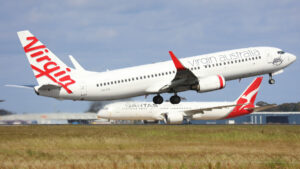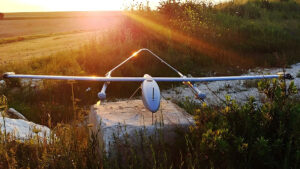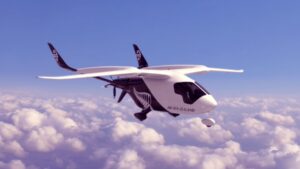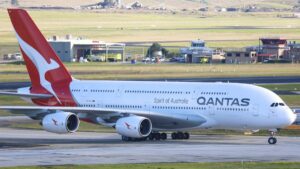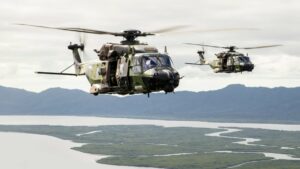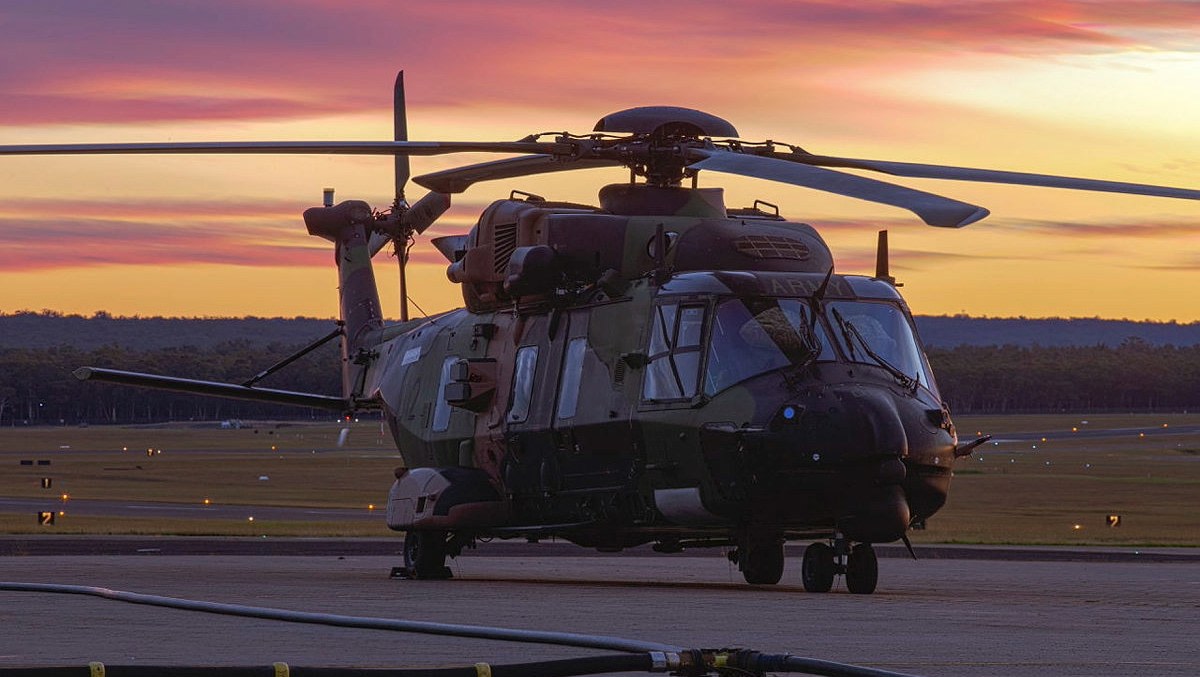
No international allies have shown interest in acquiring the Australian Defence Force’s grounded MRH-90 Taipan helicopter fleet, as disassembly processes begin on the maligned aircraft.
It’s understood that Australia has approached NH90 operator countries and independent parties with none interested in acquiring whole aircraft; however, processes continue to find any parties interested in spare parts or the entire military transport helicopters.
Australian Aviation can confirm disassembly is being conducted by industry partners using standard mechanisms but cannot substantiate rumours that the aircraft will eventually be buried underground.
Deputy Prime Minister and Minister for Defence Richard Marles, speaking at a doorstop media conference in Geelong, Victoria, on 22 December, said the government is looking at all available options for maximising the value which sits within the Taipan fleet.
Earlier this year, the Australian government announced that the ADF MRH-90 Taipan helicopter fleet was grounded and would not return to flying operations before their planned withdrawal date of December this year, following a series of aircraft accidents.
An MRH-90 helicopter crashed south of Hamilton Island while participating in Exercise Talisman Sabre in July 2023, while another aircraft ditched into NSW waters during a routine counterterrorism training exercise in March.
The incidents followed suspended flying operations in June 2021 after issues were found relating to the aircraft’s IT support system, as well as a tail rotor vibration problem identified at HMAS Albatross in 2019.
“In September 2023, the Australian government announced the MRH-90 helicopter fleet would not return to flying operations,” a Department of Defence spokesperson said.
“Defence is working with Airbus Australia Pacific and NATO Helicopter Industries to harvest key spares from the MRH-90 fleet for the use of other NH90 operators. Defence will dispose of the remaining airframes and systems in an environmentally friendly and cost-effective manner.
“The MRH-90 was a project of concern since 2011 and was unable to meet the Defence’s capability, availability, and affordability requirements. Defence considered a number of helicopter replacement options, with the Black Hawk representing the most expedient and lowest risk option to replace the MRH-90.”
The Taipan helicopter fleet will be replaced by the accelerated introduction into service of 40 UH‑60M Black Hawk helicopters acquired under the LAND 4507 Phase 1 Multi-Role Helicopter Rapid Replacement Project announced in January 2023.
Those aircraft will be joined by new AH-64E Apache helicopters expected to be introduced into service with the Australian Army in 2025.
Assistant Minister for Defence Matt Thistlethwaite said Australia has significant helicopter assets such as the existing Chinook heavy transport helicopters and upcoming Black Hawk helicopters (currently in verification and testing), despite the dismantling of the Taipan fleet.
“The advice from the safety experts was that that (Taipan) fleet should no longer be operational and is being phased out,” he said during a press conference held at Open Arms in Sydney on 19 December.
“Australia has received the first Black Hawks; they are in the process of being commissioned, but at all times when it comes to all equipment within the Australian Defence Force, safety is paramount and we can’t cut corners on that testing and verification process that’s going on at the moment.”
When questioned about whether the federal government had received a request from Ukraine for Australia’s Taipan helicopters, Assistant Minister for Defence Thistlethwaite said the helicopters will be decommissioned in the ordinary process.
“The Taipan helicopters have been decommissioned by the government and the Australian Defence Force after a number of issues, most recently the tragic accident that occurred in Talisman Sabre, where, unfortunately, a number of members of the Australian Defence Force perished,” he said during a doorstop interview at RAAF Base Edinburgh in Adelaide on 8 January.
“Australia is one of the largest non-NATO contributors to the resistance effort in Ukraine. Already we’ve devoted $910 million worth of expenditure. About $730 million of that is on military equipment. It includes 120 Bushmasters, it includes a wedgetail aircraft, it includes many artillery vehicles, it includes artillery and howitzers. And, of course, it includes humanitarian support.
“We make decisions as a government, based on the advice of the Australian Defence Force, working in cooperation with the Ukrainian military, about what is the most appropriate support that we can provide, and we’ll continue to do that.
“I think it’s worth noting that there’s an ongoing safety investigation that’s being conducted by the civil aviation and military safety authorities. That will run its course and findings will be made. But those helicopters will be decommissioned in the ordinary course.
“They’re being replaced by Black Hawks. We’ve received the first batch of those Black Hawks and they’re currently in the process of commissioning and training. We want to make sure that safety is first when it comes to not only the helicopter fleet, but all equipment that’s used by the Australian Defence Force.”
- SEO Powered Content & PR Distribution. Get Amplified Today.
- PlatoData.Network Vertical Generative Ai. Empower Yourself. Access Here.
- PlatoAiStream. Web3 Intelligence. Knowledge Amplified. Access Here.
- PlatoESG. Carbon, CleanTech, Energy, Environment, Solar, Waste Management. Access Here.
- PlatoHealth. Biotech and Clinical Trials Intelligence. Access Here.
- Source: https://australianaviation.com.au/2024/01/no-buyers-found-as-defence-sunsets-troubled-taipan-fleet/
- :has
- :is
- :not
- :where
- 1
- 120
- 19
- 2011
- 2019
- 2021
- 2023
- 2025
- 22
- 40
- 8
- a
- About
- accelerated
- accident
- accidents
- acquired
- acquiring
- advice
- After
- Airbus
- aircraft
- All
- already
- an
- and
- announced
- Another
- any
- Apache
- appropriate
- ARE
- arms
- Army
- AS
- Assets
- Assistant
- At
- Australia
- Australian
- Authorities
- availability
- available
- aviation
- base
- based
- BE
- been
- before
- begin
- being
- Black
- but
- buyers
- by
- CAN
- cannot
- capability
- civil
- COM
- comes
- Concern
- conducted
- Conference
- Confirm
- considered
- continue
- contributors
- cooperation
- corners
- cost-effective
- countries
- course
- Currently
- Cut
- Date
- December
- decisions
- defence
- Department
- Despite
- dismantling
- dispose
- do
- during
- Edinburgh
- effort
- Entire
- environmentally
- environmentally friendly
- equipment
- eventually
- Exercise
- existing
- expected
- experts
- Federal
- Federal government
- Find
- findings
- First
- FLEET
- flying
- followed
- following
- For
- Force
- found
- friendly
- from
- going
- Government
- had
- Hamilton
- harvest
- Have
- Hawk
- he
- heavy
- Held
- helicopter
- helicopters
- However
- HTTPS
- Humanitarian
- identified
- in
- incidents
- includes
- independent
- industries
- industry
- industry partners
- interest
- interested
- International
- Interview
- into
- introduced
- Introduction
- investigation
- issues
- IT
- IT Support
- ITS
- January
- joined
- jpg
- July
- june
- Key
- Land
- largest
- longer
- looking
- lowest
- made
- make
- manner
- many
- March
- matt
- maximising
- mechanisms
- Media
- Meet
- Members
- Military
- million
- million worth
- minister
- moment
- most
- New
- no
- None
- noting
- number
- occurred
- of
- on
- ONE
- ongoing
- only
- open
- operational
- Operations
- operator
- operators
- Option
- Options
- or
- ordinary
- Other
- out
- Pacific
- Paramount
- participating
- parties
- partners
- parts
- phase
- Phased
- planned
- plato
- Plato Data Intelligence
- PlatoData
- press
- Prime
- prime minister
- Problem
- process
- processes
- project
- provide
- Questioned
- rapid
- received
- recently
- remaining
- replace
- replaced
- replacement
- representing
- request
- Requirements
- Resistance
- return
- Richard
- Risk
- routine
- Run
- Safety
- Said
- September
- Series
- service
- should
- shown
- significant
- since
- sits
- South
- speaking
- spokesperson
- standard
- such
- support
- sure
- sydney
- system
- Systems
- Testing
- that
- The
- their
- they
- think
- this
- this year
- those
- times
- to
- Training
- transport
- Ukraine
- Ukrainian
- unable
- under
- understood
- unfortunately
- upcoming
- use
- used
- using
- value
- Vehicles
- Verification
- Victoria
- want
- was
- we
- WELL
- were
- What
- What is
- when
- whether
- which
- while
- whole
- will
- with
- withdrawal
- within
- working
- worth
- would
- year
- zephyrnet


